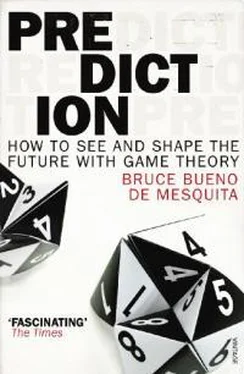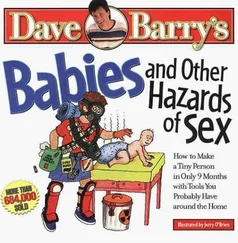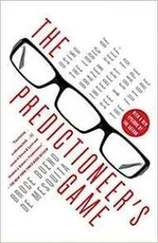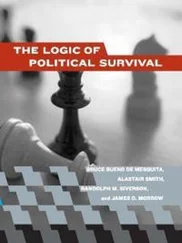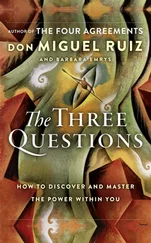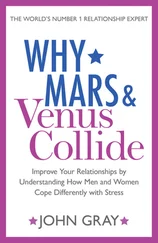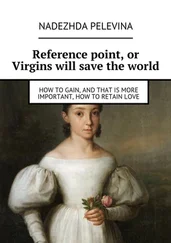Figure 2.1 places each of our three voting blocs—Republicans, Democrats, and blue-collar independents—at the policy outcomes they prefer when it comes to trade and defense spending. That’s why Republicans are found in the upper right-hand corner as you look at the figure, indicating their support for much freer trade and much higher defense spending. Democrats are on the far left-hand side just below the vertical center. That is consistent with their wanting much less spent on defense and a modest shift in trade policy. Blue-collar independents are found on the bottom right, consistent with their preference for trade protection and higher defense outlays. And, as you can see, there is a point labeled “Status Quo,” which denotes current defense spending and trade policy.
FIG. 2.1. Defense and Trade Policy in the National Interest

By putting the two issues together in the figure I am acknowledging that they are often linked in public debate. The debate generally revolves around how best to balance trade and defense given that there are inherent trade-offs between them. Free trade, for instance, can imply selling high-end computer technology, weapons technology, and other technologies that adversaries might use to threaten our national security. High tariffs might provoke trade wars or worse, thereby potentially harming national security and prompting arguments to spend more on national defense.
I assume that everyone prefers policies closer to their favored position (that’s where the black dots associated with the Republicans, Democrats, and independents are positioned) to policies that are farther away. For example, blue-collar independents would vote to change the status quo on defense and trade if they had the chance to choose a mix on these issues that was closer to the black dot associated with them—that is, closer to what they want.
To show the range of policy combinations that the blue-collar independents like better than the status quo, I drew a circle (showing only a part of it) whose center is their most desired policy combination and whose perimeter just passes through the status quo policy. 6Anything inside the arc whose center is what blue-collar independents most want is better for them than the prevailing approach to defense spending and trade. The same is true for the points inside the arcs centered on the Republicans and the Democrats that pass through the status quo.
By drawing these circles around each player’s preferred policy mix we learn something important. We see that these circles overlap. The areas of overlap show us policy combinations that improve on the status quo for a coalition of two of the three players. For instance, the lined oblong area tilting toward the upper left of the figure depicts policies that improve the well-being of Democrats and Republicans (ah, a bipartisan foreign policy opposed by independent blue-collar workers). The gray petal-shaped area improves the interests of Democrats and blue-collar independents (at the expense of Republicans), and the bricked-over area provides a mix of trade and defense spending that benefit the Republicans and blue-collar independents (to the chagrin of Democrats).
Because we assumed that each of the three voting blocs is equal in size, each overlapping area identifies defense and trade policies that command the support of two-thirds of the electorate. Here’s the rub, then, when it comes to talking about the national interest. One coalition wants more free trade and less defense spending. Another wants less free trade and less defense spending. The third wants less free trade and more defense spending. So, we can assemble a two-thirds majority for more defense spending and also for less. We can find a two-thirds coalition for more free trade or for higher tariffs or (in the politically charged rhetoric of trade debate) for more fair trade. In fact, there are loads of ways to allocate effort between defense spending and trade policy to make better off whichever coalition forms. 7
What, then, is the national interest? We might have to conclude that except under the direst circumstances there is no such thing as “the national interest,” even if the term refers to what a large majority favors. That is surprising, perhaps, but it follows logically from the idea that people will align themselves behind policies that are closer to what they want against policies that are farther from what they advocate. It just happens that any time there are trade-offs between alternative ways to spend money or to exert influence, there are likely to be many different spending or influence combinations that beat the prevailing view. None can be said to be a truer reflection of the national interest than another; that reflection is in the eyes of the beholder, not in some objective assessment of national well-being. So much for the venerable notion that our leaders pursue the national interest, or, for that matter, that business executives single-mindedly foster shareholder value. I suppose, freed as they are to build a coalition that wants whatever it is they also want, that our leaders really are free to pursue their own interests and to call that the national interest or the corporate interest.
WHAT IS THE OTHER GUY’S BEHAVIOR? (DOES HE HAVE GOOD CARDS OR NOT?)
To understand how interests frame so many of the questions we have at stake, game theory still requires that people behave in a logically consistent way within those interests. That does not mean that people cannot behave in surprising ways, for surely they can. If you’ve ever played the game Mastermind, you’ve confronted the difficulties of logic directly. In Mastermind—a game I’ve used with students to teach them about really probing their beliefs—one player sets up four (or, in harder versions, more) colored pegs selected from among six colors in whatever order he or she chooses. The rest of the players cannot see the pegs. They propose color sequences of pegs and are told that yes, they got three colors right, or no, they didn’t get any right, or yes, they got one color in the right position but none of the others. In this way, information accumulates from round to round. By keeping careful track of the information about what is true and what is false, you gradually eliminate hypotheses and converge on a correct view of what order the colored pegs are in. This is the point behind a game like Mastermind, Battleship, or charades. It is also one point behind the forecasting games I designed and use to predict and engineer events.
The key to any of these games is sorting out the difference between knowledge and beliefs. Different players in any game are likely to start out with different beliefs because they don’t have enough information to know the true lay of the land. It is fine to sustain beliefs that could be consistent with what’s observed, but it’s not sensible to hold on to beliefs after they have been refuted by what is happening around us. Of course, sorting out when beliefs and actions are inconsistent requires working out the incentives people have to lie, mislead, bluff, and cheat.
In Mastermind this is easy to do because the game has rules that stipulate the order of guessing and that require the person who placed the pegs to respond honestly to proposed color sequences suggested by other players. There is no point to the game if the person placing the pegs lies to everyone else. But even when everyone tells the truth, it is easy to slip into serious lapses in logic that can lead to entirely wrong beliefs. That is something to be careful about.
Slipping into wrong beliefs is a problem for many of us. It is easy to look at facts selectively and to reach wrong conclusions. That is a major problem, for instance, with the alleged police practice of profiling, or some people’s judgment about the guilt or innocence of others based on thin evidence that is wrongly assessed. There are very good reasons why the police and we ordinary folk ought not to be too hasty in jumping to conclusions.
Читать дальше
